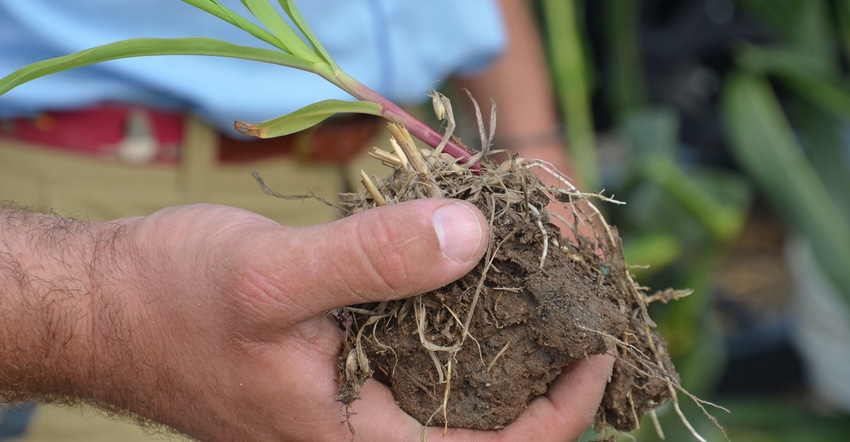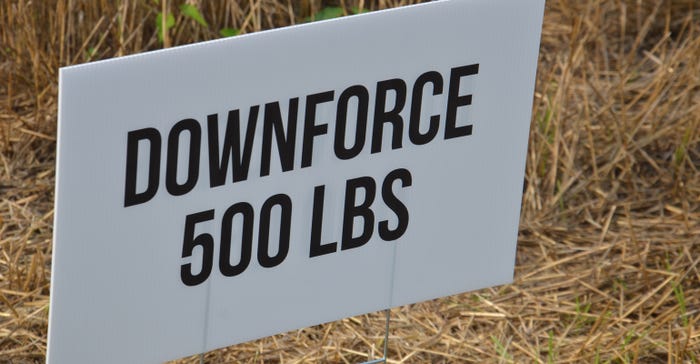
Could you tell if too much downforce was applied on row units at planting just by looking? Tom Nugent and his son, Thomas, Elnora, Ind., gave farmers attending their field day a chance to find out. They planted corn plots with varying levels of downforce into wheat stubble last summer.
Rick Applegate, Precision Farming Solutions, Birdseye, Ind., co-sponsored the field day. He advised Tom and Thomas as they put their custom planter together for the 2021 planting season. Equipped with Precision Planting technology, including DeltaForce, which can adjust down pressure on row units hydraulically and automatically row by row, their planter was used to plant demonstration plots.
So, what’s the answer? Can you tell if a plot was planted with too little or too much downforce? Based on show-and-tell demos at the field day, you can if you dig plants.

If too much down pressure was applied, expect the soil around small plants to break out in chunks or cubes. Roots will likely be somewhat restricted, with fewer hair roots. In older plants, dug at tasseling or after, roots may appear to flatten out below the stalk, limited by a hardpan of soil.
In plots planted with too little downforce, expect to see an erratic stand where some seedlings didn’t have the right seed-to-soil contact to germinate and emerge, spokespersons say.
About the Author(s)
You May Also Like




